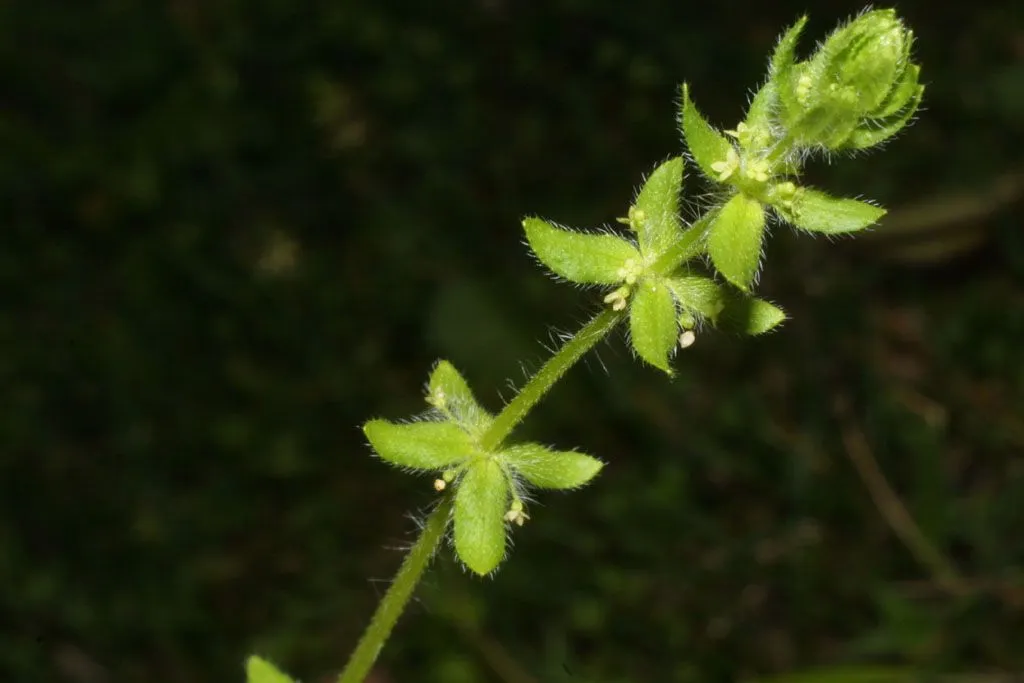
Author: (Bellardi) Ehrend.
Bibliography: Ann. Naturhist. Mus. Wien 65: 18 (1961 publ. 1962)
Year: 1962
Status: accepted
Rank: species
Genus: Cruciata
Vegetable: False
Observations: Morocco, Europe to W. & C. Asia
Piedmont bedstraw, scientifically known as Cruciata pedemontana, is a notable member of the Rubiaceae family. This plant has gained considerable interest due to its diverse presence ranging from Morocco in North Africa, across various parts of Europe, and extending into Western and Central Asia. First cataloged comprehensively in a publication from the Annals of the Natural History Museum in Vienna in 1961, it was recognized and further detailed by Ehrend.
This perennial herb is distinguished by its modestly charming appearance. Characterized by slender, sprawling stems and whorls of narrow leaves, Piedmont bedstraw often forms intricate carpets in its native habitats, typically gracing meadows, forest clearings, and sometimes hanging on rocky crevices. Its subtle yellow flowers bloom in clusters, contributing both a delicate aesthetic and critical ecological roles in pollinator support.
Adapted to a variety of climates within its broad geospatial range, Cruciata pedemontana demonstrates notable resilience and adaptability. It thrives in environments ranging from the temperate regions of Europe to the more arid zones of Central Asia, typically flowering in the spring and early summer months.
Piedmont bedstraw’s significance extends beyond its ecological presence. In historical contexts, plants from the Rubiaceae family have been utilized for traditional remedies and even for dye production. While specific ethnobotanical uses for Piedmont bedstraw are less documented, its relatives in the family hint at potential medicinal and utilitarian values.
In summary, Cruciata pedemontana embodies both beauty and ecological importance, seamlessly integrating into a wide array of landscapes across several continents. The scientific documentation initiated by Bellardi and elaborated by Ehrend., ensures that this species is recognized and studied within the botanical community, contributing to the broader understanding of plant biodiversity and environmental adaptation.
Eng: piedmont bedstraw
Deu: piemonteser kreuzlabkraut
En: Piedmont bedstraw, Piedmont crosswort
Bg: Лепкав кръстец
Cs: Svízelka piemontská
Fr: Croisette du Piémont, Gaillet du Piémont, Gaillet croisette du Piemont
De: Piemonteser Kreuzlabkraut, Piemont-Kreuzlabkraut
It: Crocettona, Crocettona piemontese
Taken Dec 30, 2021 by Laurent magne (cc-by-sa)
Taken May 26, 2019 by Urban Kaytlin (cc-by-sa)
Taken Jan 1, 1900 by EOL − Steve R. Turner (cc-by-nc-sa)
Taken Jun 12, 2020 by Bertille Bretheau (cc-by-sa)
Taken May 10, 2022 by Pieter Verbrugghe (cc-by-sa)
Taken Jan 1, 1900 by EOL − Steve R. Turner (cc-by-nc-sa)
Taken Jun 11, 2019 by Tela Botanica − Jean-Claude Bouzat (cc-by-sa)
Taken Jun 11, 2019 by Tela Botanica − Jean-Claude Bouzat (cc-by-sa)
Taken Jun 11, 2019 by Tela Botanica − Jean-Claude Bouzat (cc-by-sa)
Taken Jun 12, 2000 by Tela Botanica − Liliane ROUBAUDI (cc-by-sa)
Taken Jan 1, 1970 by Photoflora – L’Abbé COSTE (©)
Taken Aug 15, 2018 by Photoflora – Benoit BOCK (©)
Taken Jun 15, 2000 by Tela Botanica − Liliane Roubaudi (cc-by-sa)
Taken Jun 15, 2000 by Tela Botanica − Liliane Roubaudi (cc-by-sa)
Taken Jun 7, 2013 by Tela Botanica − Hugues TINGUY (cc-by-sa)
Taken Apr 25, 2004 by EOL − Steven J. Baskauf (cc-by-nc-sa)
Taken Apr 25, 2004 by EOL − Steven J. Baskauf (cc-by-nc-sa)
Taken Apr 25, 2004 by EOL − Steven J. Baskauf (cc-by-nc-sa)
Taken Apr 25, 2004 by EOL − Steven J. Baskauf (cc-by-nc-sa)
Taken Apr 25, 2004 by EOL − Steven J. Baskauf (cc-by-nc-sa)
Taken Jul 15, 2013 by Photoflora – Jean-Luc TASSET (©)
Taken Jun 15, 2000 by Tela Botanica − Liliane Roubaudi (cc-by-sa)
Taken Jun 15, 2000 by Tela Botanica − Liliane Roubaudi (cc-by-sa)
Taken Jun 12, 2000 by Tela Botanica − Liliane ROUBAUDI (cc-by-sa)
Taken Jun 12, 2000 by Tela Botanica − Liliane ROUBAUDI (cc-by-sa)
Taken Jun 12, 2000 by Tela Botanica − Liliane ROUBAUDI (cc-by-sa)
© copyright of the Board of Trustees of the Royal Botanic Gardens, Kew.
© copyright of the Board of Trustees of the Royal Botanic Gardens, Kew.
© copyright of the Board of Trustees of the Royal Botanic Gardens, Kew.
Growth habit>: Forb/herb
Bloom months: [‘jun’, ‘jul’]
Family: Myrtaceae Author: (F.Muell.) K.D.Hill & L.A.S.Johnson Bibliography: Telopea 6: 402 (1995) Year: 1995 Status:…
Family: Rubiaceae Author: Pierre ex A.Froehner Bibliography: Notizbl. Bot. Gart. Berlin-Dahlem 1: 237 (1897) Year:…
Family: Sapindaceae Author: Koidz. Bibliography: J. Coll. Sci. Imp. Univ. Tokyo 32(1): 38 (1911) Year:…
Family: Asteraceae Author: A.Gray Bibliography: Pacif. Railr. Rep.: 107 (1857) Year: 1857 Status: accepted Rank:…
Family: Fabaceae Author: Medik. Bibliography: Vorles. Churpfälz. Phys.-Ökon. Ges. 2: 398 (1787) Year: 1787 Status:…
Family: Aspleniaceae Author: (Cav.) Alston Bibliography: Bull. Misc. Inform. Kew 1932: 309 (1932) Year: 1932…